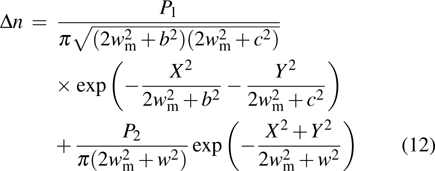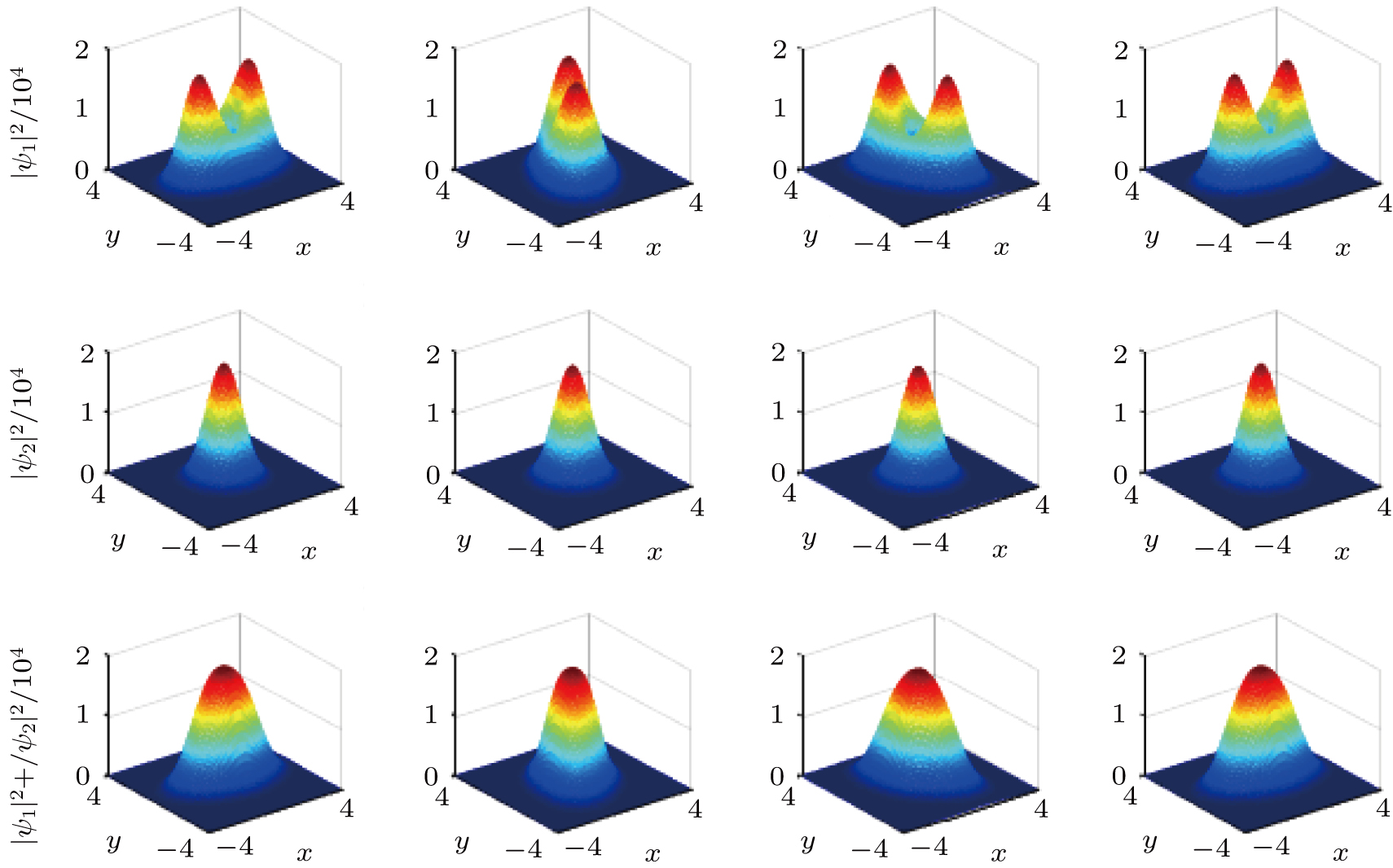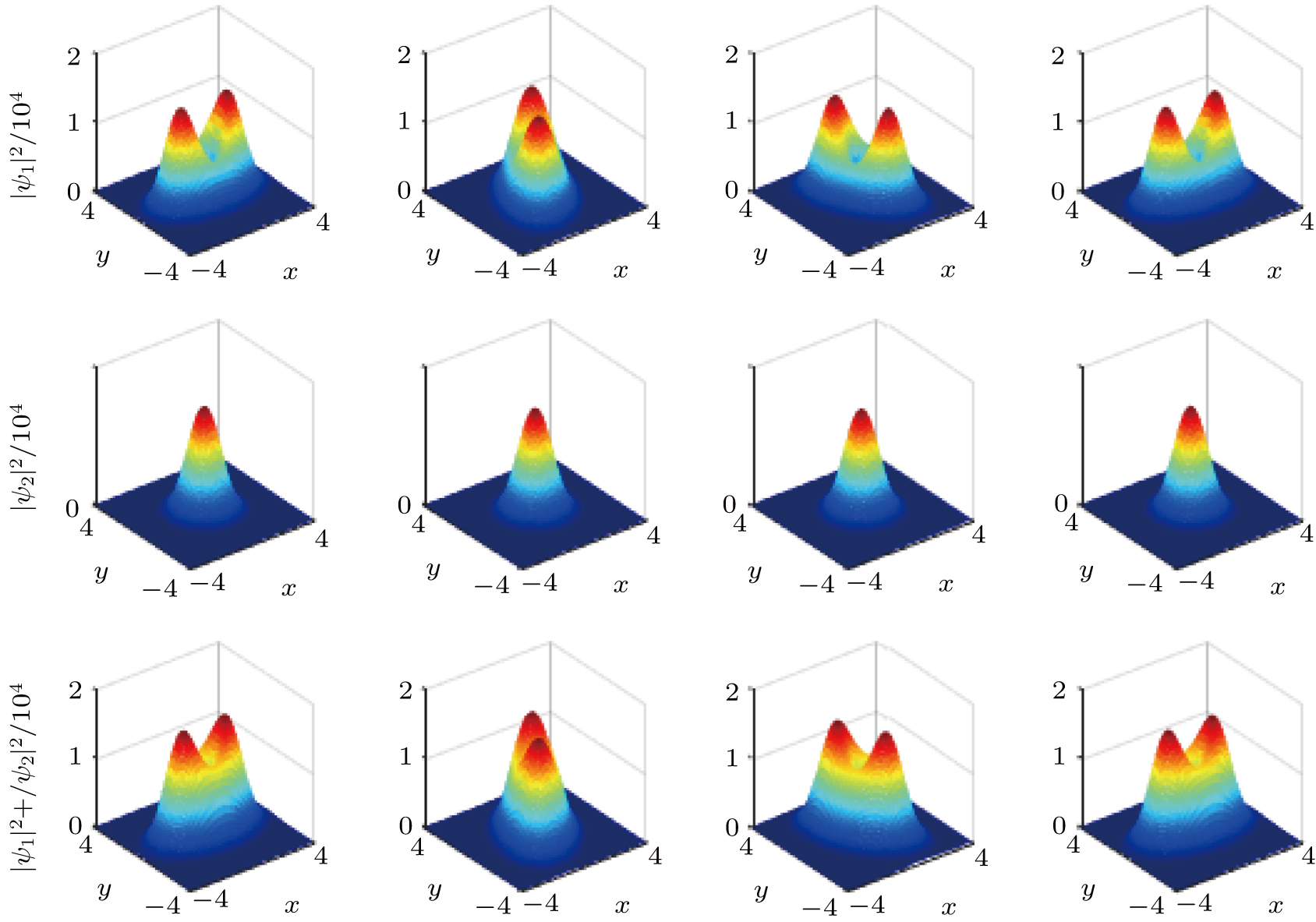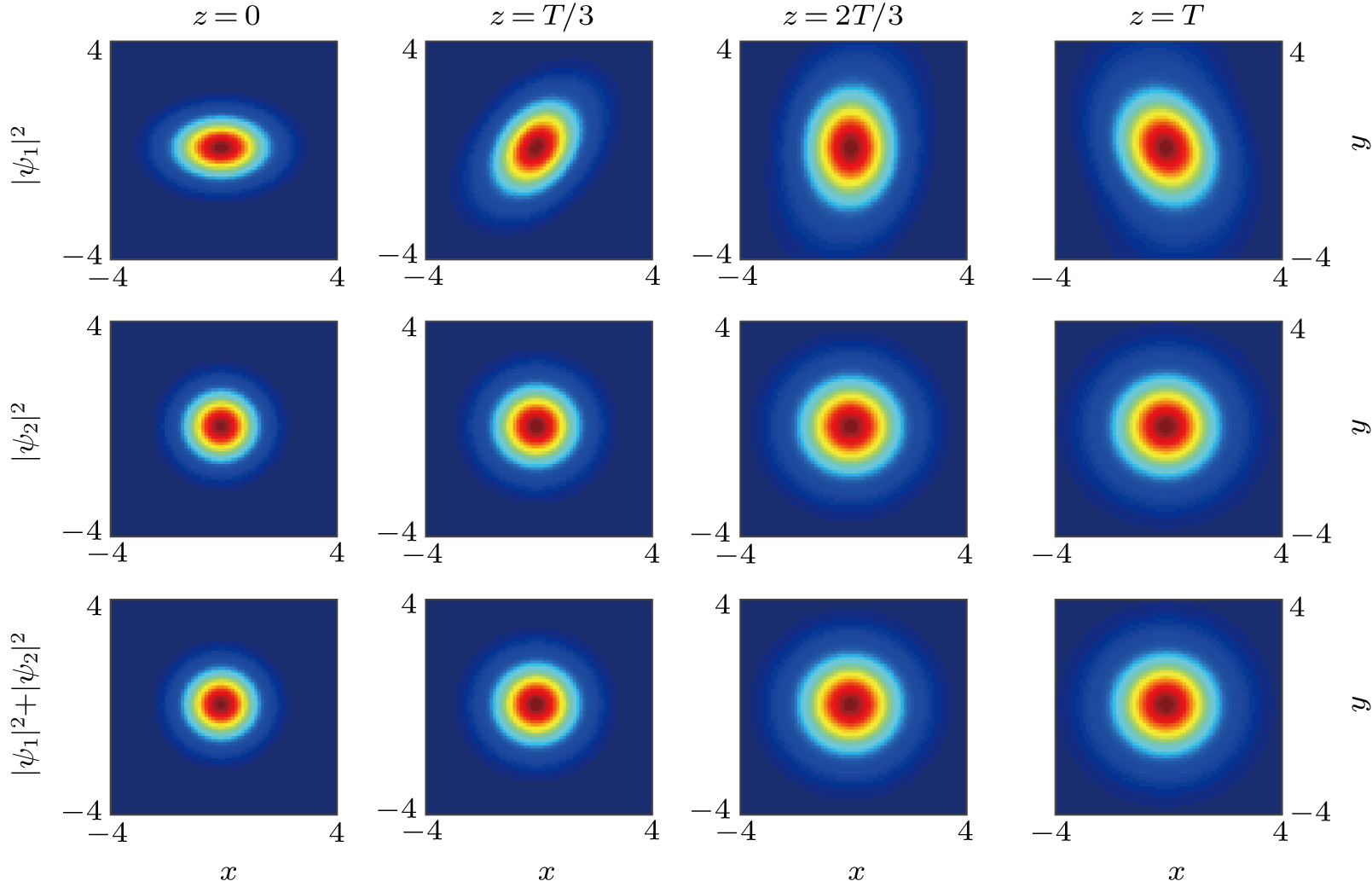† Corresponding author. E-mail:
Project supported by the National Natural Science Foundation of China (Grant No. 11604199) and the China Scholarship Council (Grant No. 201708410236).
We investigate the incoherent beams with two orthogonal polarizations in nonlocal nonlinear media, one of which is a fundamental Gaussian beam and the other is spiraling elliptic Hermite–Gaussian beam carrying the orbital angular momentum (OAM). Using the variational approach, we obtain the critical power and the critical OAM required for the vector spiraling elliptic Hermite–Gaussian solitons. In the strong nonlocality region, two components of the vector beam contribute to the nonlinear refractive index in a linear manner by the sum of their respective power. The nonlinear refractive index exhibits a circularly symmetrical profile in despite of the elliptic shapes for spiraling Hermite–Gaussian beams. We find that in the strong nonlocality region, the critical power and the rotational velocity are the same regardless of the relative ratio of the constituent powers. The nonlinear refractive index loses its circular symmetry in weak nonlocality region, and the nonlinear coupling effect is observed. Due to the radiation of the OAM, the damping of the rotation is predicted, and can be suppressed by decreasing the proportion of the spiraling elliptic component of the vector beam.
The study of the propagations of optical beams in nonlocal nonlinear media has aroused a large amount of interest during recent years, both theoretically[1–11] and experimentally.[12,13] The nonlocality refers to that the response of the medium to the input light at a particular point is not solely determined by the optical intensity at that point but also depends on the intensity around it. According to the relative width of the response function and the optical beam, there are four categories of the nonlocality;[3] that is, local, weakly nonlocal, generally nonlocal, and strongly nonlocal. In particular, the strong nonlocality is just the case when the characteristic nonlocal length is much larger than the beam width. For this special case, the evolutions of a spatial optical beam can be described by the Snyder–Mitchell model,[1] which is a linear model and has an exact Gaussian-shaped stationary solution called as an accessible soliton. Various kinds of spatial solitons can be supported by nonlocal nonlinear media, such as Hermite–Gaussian solitons, Laguerre–Gaussian solitons,[14,15] Ince–Gaussian solitons,[16] dipole solitons,[17] spiraling elliptic solitons,[18,19] and spiraling elliptic Hermite–Gaussian solitons,[20] just to name a few. Specifically, the spiraling elliptic solitons carry the orbital angular momentum (OAM) and can rotate in the transverse, which can form in the isotropic nonlinear media due to an effective anisotropic diffraction resulting from the OAM.[18,19] It is shown that spiraling elliptic soliton is the lowest-order mode of spiraling elliptic Hermite–Gaussian soliton,[20] and for the latter it exhibits n holes aligning along the direction of the principal axis of ellipse for the n-th order mode.
A vector soliton occurs when more than one field are involved.[21,22] In general, the vector soliton is absent of any interference between the single components by using different polarizations or different wavelengths. Vector solitons can also exist in nonlocal nonlinear media.[23–25] Very recently, we have shown that the polarized vector spiraling elliptic solitons can be supported by the nonlocality of nonlinear media.[26] We demonstrate that a Gaussian beam can induce an equivalent refractive waveguide of the circular symmetry, in which a spiraling elliptic soliton forms, with no special requirement of the optical power for the latter. In this paper, we will investigate the spiraling elliptic Hermite–Gaussian soliton propagating in such an equivalent refractive index waveguide induced by the orthogonally polarized Gaussian beam. Furthermore, we will also discuss the nonlinear coupling effects in the weak nonlocality, where the refractive index waveguide loses its circular symmetry.
The vector nonlocal nonlinear Schrödinger equation, which describes the propagation of the (1+2)-dimensional polarized vector beam 


 |


The first component of the vector beams considered here is the spiraling elliptic Hermite–Gaussian beam[20]
 |



 |

 |
If the response function is twice differentiable at x = 0, the nonlocal nonlinear Schrödinger equation (
 |

 |
 |


The Lagrangian density of Eq. (
 |


 |
 |
 |
 |
The strongly nonlocal model in Eq. (
 |

We should note that vector solitons form when 





So far, we have discussed the strong nonlocality of the nonlocal nonlinear Schrödinger Eq. (
The cases for weak nonlocalities will be quite different, as shown later. Substitution of the spiraling Gaussian beams in Eq. (
 |
The different contribution to the nonlinear refractive index from the fact that 






The discrepancy of 



 | Fig. 6. Evolution of beam with a ratio 

|
As can be seen from Fig. 

 | Fig. 7. Evolutions of vector solitons in weak nonlocality when wm = 2. Other parameters are set as b = 1.5, c = 1, w = 1.1767, 

|
It can be found that in the weak nonlocality, the rotational speed is smaller compared with the strong nonlocal case. In one period 
The propagations of incoherent beams with two orthogonal polarizations in nonlocal nonlinear media are analytically discussed by variational approach. The vector beam is composed of a fundamental Gaussian beam and a spiraling elliptic Hermite–Gaussian beam carrying the orbital angular momentum. We obtain the critical power and the critical OAM required for the vector spiraling elliptic Hermite–Gaussian solitons. We find that the critical power, the critical phase-cross-product-term coefficient, and the rotational velocity are the same for any-order spiraling elliptic Hermite–Gaussian soliton. By changing the relative power ratio of the two components of the vector beam, the total intensity structure can be controlled. In the weak nonlocality region, the nonlinear refractive index loses its circular symmetry, and the nonlinear coupling effect is observed. Due to the radiation of the OAM, the damping of the rotation is predicted and can be suppressed by decreasing the proportion of the spiraling elliptic component of the vector beam. An obvious beam expanding is found to result from the radiating power in the propagation.
| [1] | |
| [2] | |
| [3] | |
| [4] | |
| [5] | |
| [6] | |
| [7] | |
| [8] | |
| [9] | |
| [10] | |
| [11] | |
| [12] | |
| [13] | |
| [14] | |
| [15] | |
| [16] | |
| [17] | |
| [18] | |
| [19] | |
| [20] | |
| [21] | |
| [22] | |
| [23] | |
| [24] | |
| [25] | |
| [26] | |
| [27] | |
| [28] | |
| [29] | |
| [30] | |
| [31] | |
| [32] |


















